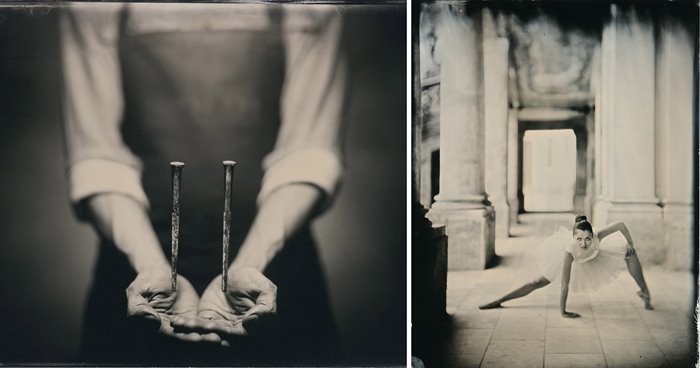The winners of the 2019 wet screen collodion contest have been announced
The Winners Of The Wet Screen Collodion Competition 2019 Have Been Announced.
The wet screen collodion Wet Plate Collodion Technique Is A Technique That Gives Photos Taken In The Present Time The Look Of Old Portraits.
In this method, the glass is covered with a collodion solution, and while it is still wet, it is placed in the camera, and the exposure is done.
In 1851, Frederick Scott Archer and Gustave Loughry invented wet collodion photography almost simultaneously. Although this technique required a portable darkroom, it quickly became popular and was used for portraits, landscapes, architecture, etc.
Invented as a medical dressing, collodion was obtained by dissolving explosive cotton powder or nitrocellulose in a mixture of ether and alcohol. The result was a viscous, transparent liquid used as a surgical dressing to hold bandages.
When this solution was mixed with small amounts of iodide and bromide, a glass plate could be coated with a transparent layer of gelatin to deposit light-sensitive silver halides.
Although collodion could also be used dry, Frederick Scott Archer discovered that its sensitivity increased tremendously when used wet, making low-exposure photography possible. The need to prepare and expose the light-sensitive plate before the silver coating dries (less than 10 to 15 minutes) made this method known as Wet Plate Collodion.
Wet collodion glass or glass negatives had one major drawback:
The entire process, from impregnation to exposure, had to be done only before the glass was dry. This means that the photographer did not have more than 10 minutes to complete everything; As a result, there is a need for a portable darkroom.
Frederick Scott Archer was not the first to use collodion to expand photography. Robert Bingham recommended this method in the book “Photogenic Manipulation” (Sal), and Gustave Legery published his formulas in an article about photographic techniques on paper and glass.
However, these methods were only theoretically stated, and Archer introduced these methods in a tested form when he published his discoveries in “Chemist.”
It is interesting to know that in this publication, Archer defended separating the dried collodion film from the glass and the reuse of the glass. Still, the method he introduced later made the collodion layer remain on the glass carrier. After this, Archer printed the “Collodion Process on Glass” manual.
The wet collodion method was prevalent and produced images of impressive quality at a meager cost. The benevolence of the inventor of this method, Frederick Scott Archer, described in the British Journal as “a kind man,” expanded the details and techniques used in this process.
This generosity did not seek personal gain for Frederick Scott Archer. He, who often looked sick and suffering, finally died in complete poverty in 1857, just six years after the introduction of the collodion method. He is almost unknown in the art world today, But it was the world standard until the 1880s when superior technologies replaced it.
The Modern Collodion website has just announced the winners of the 2019 Wet Plate Collodion Competition, its second edition worldwide.
In 2019, ninety photographers from 19 countries submitted more than 220 photos for this competition. The jury of this competition, consisting of Michael Godek, Gilles Clement, Alex Timmermans, Tom Deloza, and Paul Burden, consulted each other for nearly a month to announce the winners of this competition.
Wet plate collodion produces the sharpest image of any technique invented in the history of photography, is labor intensive, and the final image is unpredictable.
In the best case, it takes at least 20 minutes to produce each photo in this way. In this article, we look at the winning images, artists, and stories of the 2019 Collodion Wetscreen Contest winners.
Grand prize

- Name of the work: Two nails
- Name of the creator of the work: David Russo
In explaining this work, the photographer says:
I first became interested in the collodion technique a few years ago after seeing the works of Sally Mann in a photography book. I realized that the photos in this type of photography are moving, and the work process is quite fascinating. In 2013, I attended a workshop at the George Eastman Museum to study under Mark Osterman and learn the wet screen collodion process. I have been practicing ever since.
This photo, called “Two Nails,” is an attempt to share a part of my experience with the world. This work stems from an ongoing work titled The Framer. I have been a professional framer for nearly a decade. It seemed natural to start taking pictures with my work tool. With this ambrotype, I wanted to create a self-portrait that seeks beauty in its simplicity.
Making this page was an actual labor of love in itself; Because reaching this picture took about two months of my time. How to make nails float? It seems that the answer to this question is complicated. Using selective focus, lighting, visibility, and a bit of custom rigging, I was able to achieve this illusion. For me, this process was all about trial and error. I discovered that you would learn a lot in your endeavors.
Studio portrait winner
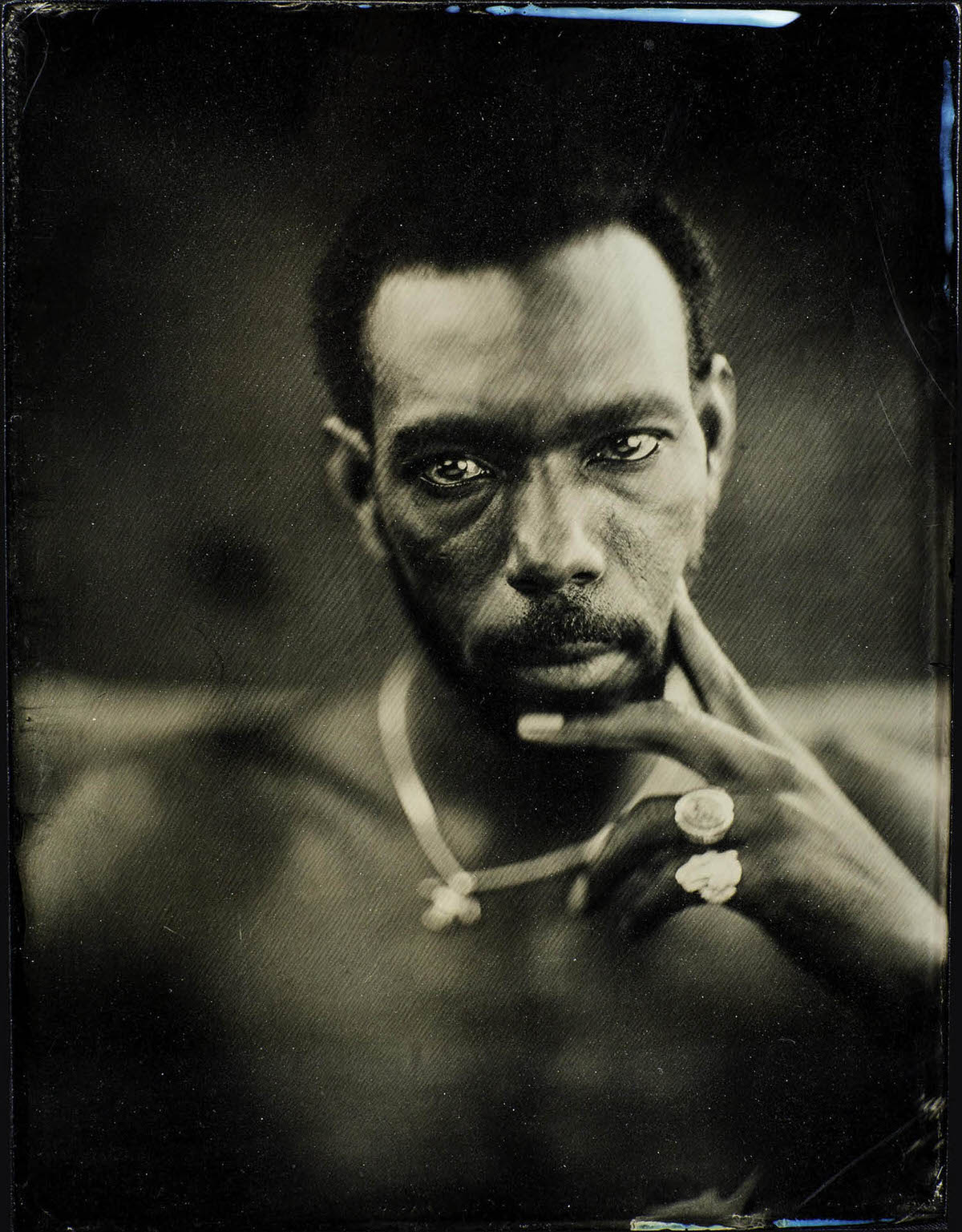
- Name of the work: Valents Monsta
- Name of the creator of the work: Matt Alberts
In explaining this work, the photographer says:
Feeling frustrated with the futility of most digital photography and wanting to make something with my hands, I discovered wet screen collodion. In February 2013, I took a class taught by Kevin Jacobson, and we became good friends. I related to Kevin’s philosophy of using the process of the accident to create something meaningful. He took me under his wing and became my mentor. While apprenticing at Kevin’s studio in Denver, I invited my close skateboarding friend, Walter Lacey, to show him the process and photograph him. Waltnessmonsta, the name of this image, was one of the first images I made for the LIFERS project series. This photo was made using a Deardorff 11×14 studio camera with a Harrison Petzval 320mm CC lens. The image on the glass is black.
First place winner of the natural light portrait

- Name of the work: Ballet in the castle
- The name of the creator of the work: Gabriel Case
In explaining this work, the photographer says:
This photo is the result of three days of preparation and negotiation. The shooting was done in one of the most beautiful castles in Hungary, the Esterhazy Palace. Since this is an important monument, we needed many permits to enter it. With the figure of this ballet dancer, I did not intend to refer to ballet; Rather, I tried to emphasize the tension around the dance itself, its edges, and its lines.
Second place winner of the natural light portrait
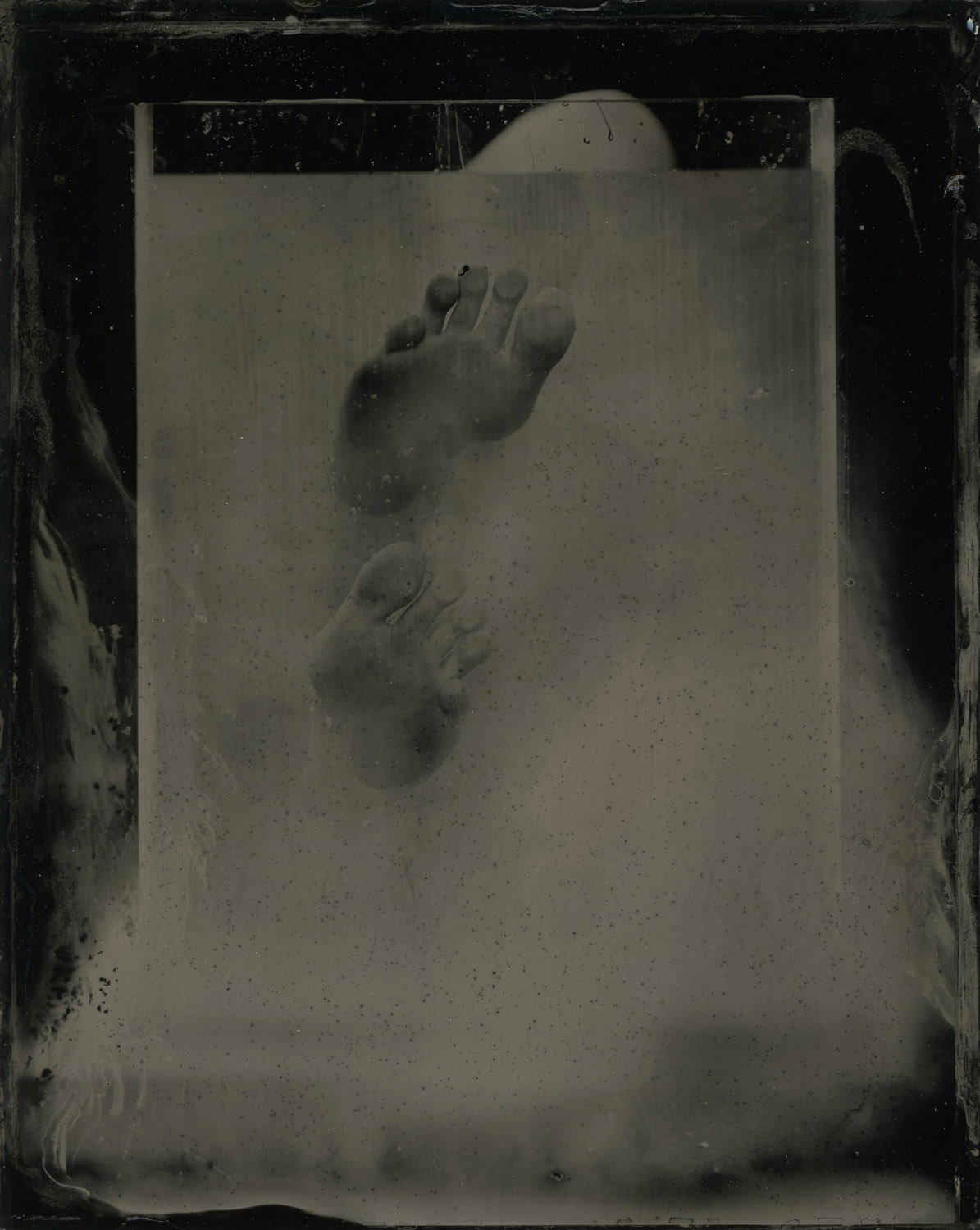
- Name of the work: Gravity
- The name of the creator of the work: Kira Hudson
In explaining this work, the photographer says:
At first before starting photography, I studied printmaking at RMIT University in Melbourne, Australia. I worked digitally for five years until I got tired of performing in front of a screen and enrolled in an ambrotype workshop in Trentham. I’m inspired by a mix of artists, writers, movies, and TV shows, and I have a large hard drive full of information collected over ten years. Among the artists whose works I visit regularly, I can mention Berlinde Dubrekre, Jenny Saville, Lauren Simonetti, and Sally Mann. I was fascinated by their raw works and respectful human body treatment. For the past few years, I’ve been working on a series centered around anxiety and the body’s physical and emotional responses to the constant over-imagining of it. In “Gravity,” I wanted the body to suffocate in the glass and water cage. I incorporate accessories such as thread, clothing, plastic packaging, and glass containers into my photographs to confine and compress the object and create feelings of everyday anxiety.
The winner of first place in the inanimate objects section
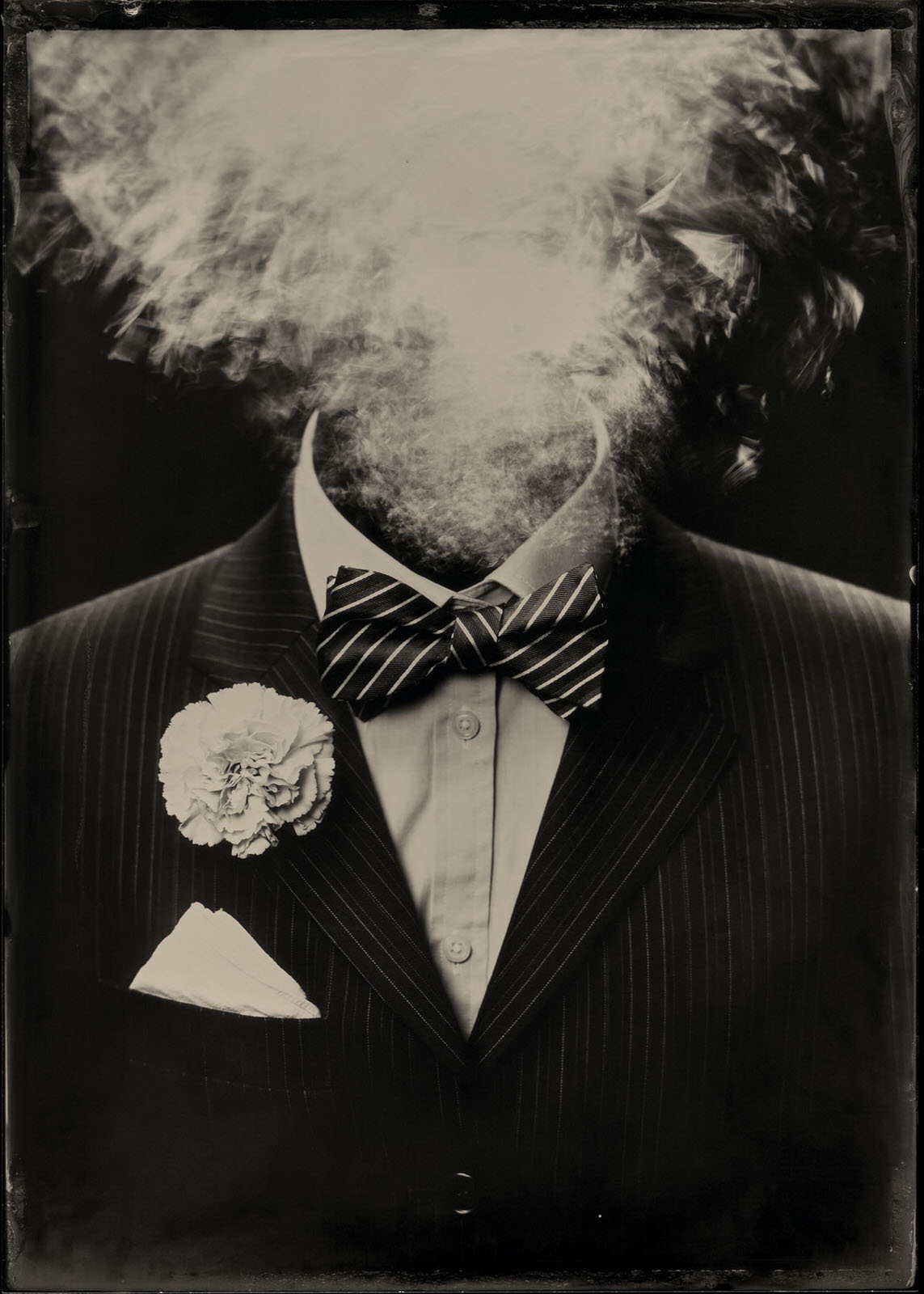
- Name of the work: Indestructible
- The name of the creator of the work: Libby and Stephen
In explaining this work, the photographer says:
We are primarily self-taught and were introduced to wet screen collodion almost accidentally when a friend showed us the basics. Indeed, there was more than a bit of difficulty in this path, So making pictures the hard way came naturally to us, which meant that we would also learn this the hard way. Our piece, “Indestructible,” is a deliberate reference to the surrealist painter Magritte. This work attempts to express the collective peak of disbelief that many felt after the 2016 presidential election in the United States. This work captures not only the surreal nature of that moment but also the cruel nature of life at this time. Beyond the symbolism of the carnation, suit, tie, and mushroom-like cloud explosion, the trick of in-camera photography associated with the Spiritualist movement of the early 1900s was used to express this shared ego and thematically disillusioning experience.
The winner of second place in the inanimate objects section

- Name of the work: World and Man
- The name of the creator of the work: Gabriel Case
In explaining this work, the photographer says:
My picture was born from the idea that the egg, the origin of our world and the meaning of birth, is placed on its edge and must balance on it. Scissors also swing above the egg as the sword of Damocles. The string can break at any time, and the scissors can cut through the fragile eggshell.
The first-place winner in landscape/architecture
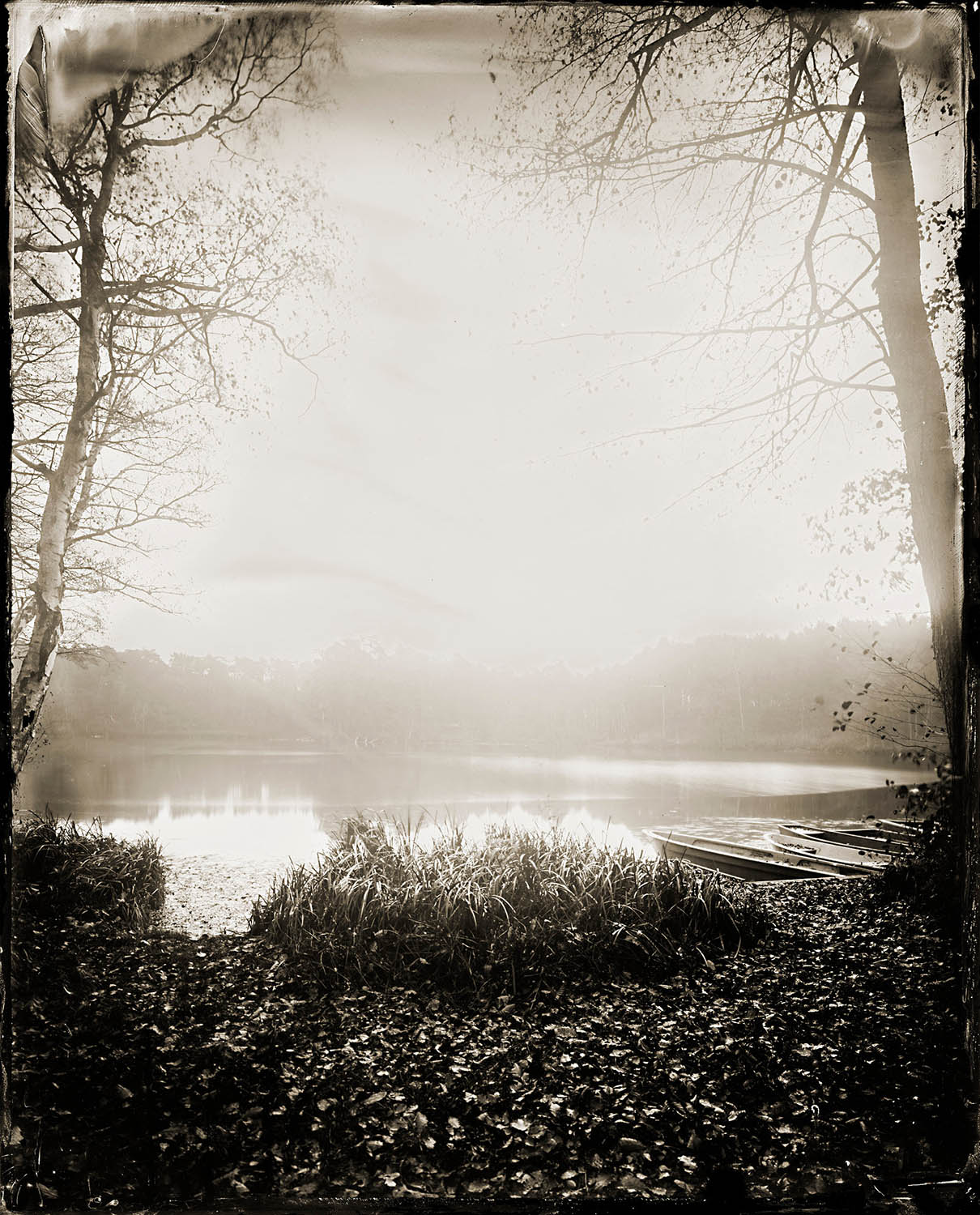
- Name of the work: A quiet beach
- Name of creator: Maximilian Zeitler
In explaining this work, the photographer says:
Last October, someone broke into the place I use for my studio and stole almost all of the giant cameras and very rare large lenses I had borrowed from a friend for large-format portraits. Collecting equipment for wet plate collodion always means searching the auction houses and hoping for luck. Since I started the wet plate collodion technique about four years ago, I have been trying to get good equipment for this. Equipment that had been destroyed.
You should always keep doing what you love. When I got over my initial shock, I packed up my last portable wooden camera and all my darkroom equipment and went to a place near Berlin called Spreewald to escape the studio and all the evil thoughts. At this small lake in the woods, I set up an 1890 camera with an old 1880 wide-angle lens and exposed a screen in about 60 seconds.
Second place winner landscape/architecture

- Name of the work: The best day
- Naam Khalith by: Lynette Birnbaum
In explaining this work, the photographer says:
I started teaching the wet plate collodion technique two years ago, and after a short time, I started making glass. I first learned about the wet screen collodion technique, But I wanted to know more about the process. I took a damp screen collodion technique summer class by Dan Estabrook at Penland School of Crafts in the summer of 2018. I returned in the spring of 2019 as Jill Enfield’s studio assistant.
These opportunities allowed me to modify and print my glass forms. The idea behind the forms was my constant search for belonging and a place to call home. I try to find a balance between 2D and 3D in my art.
I always knew where I live now was not the right place for me, So I traveled the world looking for my idea for a house. Home is more than just a place; it’s about finding the right person, community, and belongings to make that place your home.










